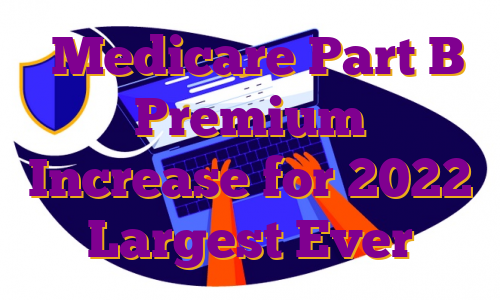Marko Geber | DigitalVision | Getty ImagesAs investors flock to municipal bonds, also known as muni bonds, the tax-free interest may trigger a costly surprise for higher-income retirees.There’s been record demand for U.S. municipal bond funds in 2021, with an estimated $85.36 billion in net inflows through September, according to Refinitiv Lipper data.While demand slid from August through October, investors poured back into muni bonds in November, despite Democrats’ stalled attempts to increase taxes on the wealthy.However, muni bond interest may create a problem for affluent investors: Medicare premium hikes.”There are a lot of moving parts, and you need to have someone look at it holistically,” said Matthew Chancey, certified financial planner at Dempsey Lord Smith in Tampa, Florida.Higher taxes and premiumsAlthough tax-exempt muni bond interest may be appealing, those earnings may increase Social Security taxes and Medicare premiums, said Tracy Sherwood, a Williamsville, New York-based CFP at Sherwood Financial Management. That’s because the formulas for Social Security taxes and Medicare Part B and Medicare Part D use so-called modified adjusted gross income or MAGI, which includes tax-exempt muni bond interest.If half of someone’s Social Security payments plus MAGI is more than $44,000 for a joint tax return ($34,000 for individual filers), up to 85% of their Social Security benefits may be taxable.More from Personal Finance:
Here’s how rising inflation may lead to higher tax bills
Risk-free bond pays 7.12% annual interest for next six months
How to pay 0% capital gains taxes with a six-figure incomeBut with relatively low thresholds, it’s difficult for some higher-income retirees to avoid paying tax on 85% of Social Security payments, Sherwood said. The bigger issue is that retirees with income above certain thresholds may owe a surcharge for Medicare Part B and Part D, known as the Income Related Monthly Adjustment Amount, or IRMAA. The base amount for Medicare Part B premiums in 2022 is $170.10 per month, a 14.5% jump from 2021. However, the payments start to increase for joint filers with MAGI over $182,000 (single filers above $91,000).”That’s where you’re looking at [Medicare Part B] premiums going up by about $70 or more per month,” said Sherwood. “That’s pretty significant.”The top Medicare Part B surcharge is $578.30 for couples filing together with MAGI at $750,000 or above.Retirees may also see premium increases for Medicare Part D, typically covering prescription drugs, with the top surcharge at $77.90 for the highest earners in 2022.Both calculations use MAGI from two years prior, so retirees need to consider the consequences of their income in advance, Sherwood said.”It’s something that taxpayers seem so aware of because if they get into this higher bracket, they have to pay higher premiums for a full year,” said Mary Kay Foss, certified public accountant and CPA faculty at CalCPA Education Foundation in Walnut Creek, California.It’s something that taxpayers seem so aware of because if they get into this higher bracket, they have to pay higher premiums for a full year.Mary Kay FossCPA faculty at CalCPA Education FoundationOf course, added taxes and premiums don’t mean retirees should steer clear of muni bond investing. However, they may consider weighing the pros and cons of tax-exempt interest with a financial advisor. “There’s no such thing as a good or a bad product,” Chancey said. Retirees need to assess each investment in its totality — including risk, yield, growth potential, tax implications, creditor protection and more, he said. “I look at every investment, and I ask myself this question: ‘Is the juice worth the squeeze?'” .
Medicare Part B Premium Increase for 2022 Largest Ever
Premiums for some Medicare enrollees will be higher than the standard because these monthly payments are based on income. Part B beneficiaries with annual incomes greater than $91,000 will pay more — how much more will depend upon income. For example, someone filing an individual tax return whose income is between $91,000 and $114,000 will pay $238.10 a month for Part B. CMS says about 7 percent of Medicare beneficiaries will have to pay more than the standard monthly premium.
Most Medicare enrollees must pay the Part B premium whether they have original Medicare or a Medicare Advantage plan. Some Advantage plans offer a so-called “give back” benefit where the plan covers part or all of a member’s Part B monthly premium. Consumers can find those plans on the Medicare plan finder. Deductibles in MA vary by plan.
Other Medicare charges also rising
The annual Part B deductible will rise $30 next year to $233, up from this year’s $203.
For Medicare Part A, which covers hospitalization and some nursing home and home health care services, the inpatient deductible that patients must pay for each hospital admission will increase by $72 in 2022 to $1,556, up from $1,484 this year. Almost all Medicare beneficiaries (99 percent) pay no Part A premium. Only people who have not worked long enough to pay their share of Medicare taxes are liable for Part A premiums.
Open enrollment for Medicare began Oct. 15 and continues through Dec. 7. During this period, beneficiaries can review their coverage and decide whether to make changes.
Dena Bunis covers Medicare, health care, health policy and Congress. She also writes the “Medicare Made Easy” column for the AARP Bulletin. An award-winning journalist, Bunis spent decades working for metropolitan daily newspapers, including as Washington bureau chief for the Orange County Register and as a health policy and workplace writer for Newsday.
Editor’s note: This story has been updated to include additional information.
.
how to appeal higher premiums
Andrii Zastrozhnov | iStock | Getty ImagesIf you’re retiring and signing up for Medicare, there’s a chance you’ll be assessed extra monthly charges — at least at first.While most enrollees pay the standard premium amounts for Part B (outpatient care) and Part D (prescription drugs), about 7% of Medicare’s 63.3 million beneficiaries end up paying extra because their income is high enough for “income-related monthly adjustment amounts,” or IRMAAs, to kick in.However, that surcharge is based on your most recent tax return available — which may not accurately reflect a reduction in income when you retire. And although you can appeal IRMAAs, it’s generally not something you can do ahead of your Medicare coverage kicking in or before the Social Security Administration sends you a “benefit determination letter.”More from Personal Finance:
How to rethink your budget amid inflation
Here are 4 ways to slash your grocery bill
Here’s who can file taxes to the IRS for free”Often we see beneficiaries get a bill for the standard premium just after the Part B enrollment, and then they get a second bill weeks later with the addition of the IRMAA,” said Danielle Roberts, co-founder of insurance firm Boomer Benefits.”Since the Social Security Administration is not making that initial determination in time for the IRMAA to even make its way on the first premium bill, you don’t want to be trying to ask for reconsideration of a decision that has yet to be made,” Roberts said.For 2022, IRMAAs kick in for individuals with modified adjusted gross income of more than $91,000. For married couples filing joint tax returns, the surcharges start above $182,000. The extra charges increase at higher income thresholds.The standard monthly premium for Part B this year is $170.10, which is what most Medicare beneficiaries pay. (Part A, which provides hospital coverage, typically comes with no premium.)The surcharge for higher earners ranges from $68 to $408.20, depending on income. That results in monthly premiums ranging from $238.10 to $578.30.For Part D, the surcharges for 2022 range from $12.40 to $77.90. That’s in addition to any premium you pay, whether through a standalone prescription drug plan or through a Medicare Advantage Plan, which typically includes Part D coverage. While the premiums vary for prescription coverage, the average for 2022 is about $33.The process to prove that your current income is lower involves asking the Social Security Administration to reconsider their assessment. You have to fill out a form and provide supporting documents.Suitable proof may include a more recent tax return (if one is available), a letter from your former employer stating that you retired, more recent pay stubs or something similar showing evidence that your income has dropped.The required form has a list of “life-changing” events that qualify as reasons for reducing or eliminating the IRMAAs, including marriage, death of a spouse, divorce, loss of pension or the fact that you stopped working or reduced your hours.Assuming your request for reconsideration works, any IRMAAs you paid will be credited to you.”Fortunately they will make it retroactive and it will be applied as a credit to their bill,” Roberts said.If your efforts don’t work, you can appeal the decision to an administrative law judge, although the process could take time and you’d continue paying those surcharges in the meantime.Additionally, your situation is reevaluated every year, which means the IRMAAs (or whether you pay them) could change annually, depending on how volatile your income is. .






